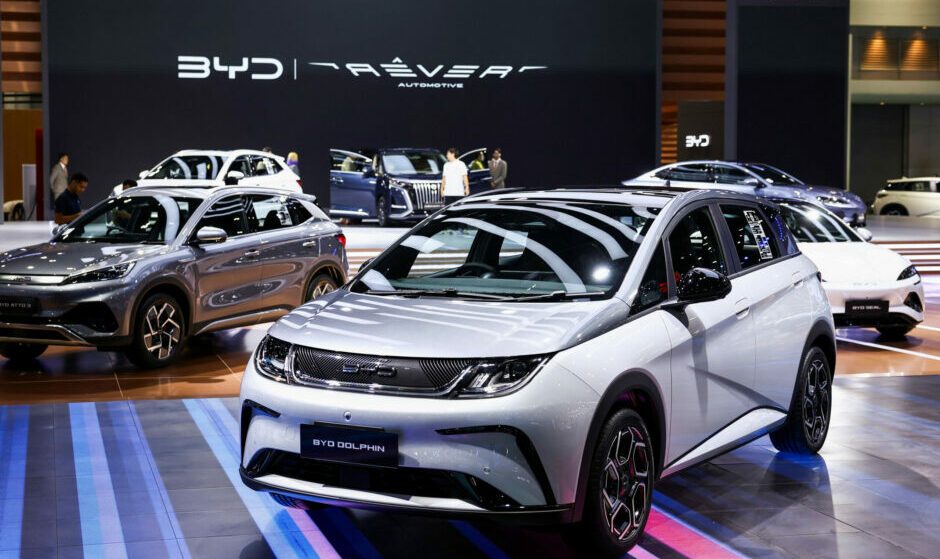China’s coffee-drinking market is turning out to be an interesting brew and the latest quarterly results from local chain Luckin Coffee and international franchise Starbucks offer a fascinating glimpse into the evolving landscape.
Both companies announced their results on April 30, providing a good rear-view mirror comparison of their performances and market strategies.
Luckin Coffee’s meteoric rise in China not only leaves Starbucks in its shadow but also underlines shifting consumer preferences and market dynamics. It highlights the power of innovation and adaptability in the competitive coffee-drinking market.
Luckin Coffee, which doubled its stores last year to 18,590 – including 30 in Singapore, its only other market – added 2,342 more in the first quarter, all but two of which were in China.
This rapid expansion hit Luckin Coffee’s margins and same-store sales dropped by 20 per cent year on year. But it also doubled its customers to 60 million every month on average and boosted revenue to nearly 6.28 billion yuan (US$869.5 million) for the quarter, up 41.5 per cent year on year.
In just one year, Luckin Coffee has opened more stores in China than Starbucks managed to over 25 years – and now has more than twice as many stores as Starbucks’ 7,093.
Takeaway bags of Luckin’s limited-edition Tom and Jerry mascarpone lattes at a Luckin Coffee shop in Beijing on October 24. Photo: Simon Song
According to Statista, the Chinese drank, on average, just 11 cups of coffee in 2022. Compared to mature coffee-drinking markets like the United States (more than 700 cups a year), the Chinese market has enormous potential.
Luckin Coffee’s success is driven by its adept use of social media and influencer marketing, which resonates particularly well with the younger, coffee-drinking crowd. Collaborations with celebrities such as Jackson Yee and partnerships with major Chinese brands such as Kweichow Moutai have boosted Luckin’s brand visibility and appeal.
They create buzz and position Luckin Coffee as a trendy and innovative brand, helping it stay relevant and top of mind in a highly competitive market.
In contrast, Starbucks reported revenues of US$706 million from China in the quarter, down 8 per cent year on year. Its Chinese same-store sales contracted by 11 per cent, with transactions falling by 4 per cent and spending per transaction down by 8 per cent.
This divergence in performance between the two coffee giants can be attributed to several factors influencing consumer behaviour and market trends in China.
Firstly, the consumption downgrade in China is real and the price difference between local and international chains is significant. The average price of a drink at Luckin Coffee and other local brands like Manner Coffee and Cotti Coffee is around 12-18 yuan, compared to Starbucks’ 25-30 yuan. For cost-conscious consumers, this is a substantial price gap.
Secondly, the shift towards working from home and satellite offices has also changed consumer behaviour. More are favouring the no-frills takeouts offered by Luckin over the more luxurious sit-in experience Starbucks offers, especially as the pace of Chinese society picks up.
The growing consumer preference for the efficiency of takeouts and pickups, coupled with a penetration pricing strategy, has driven Luckin Coffee to rapidly open small stores. This has made it much easier for customers to find a Luckin Coffee store, helping the chain to capture market share fast.
Finally and most importantly, local coffee chains have adopted innovative payment methods right from the get-go. Luckin Coffee’s order-ahead model means customers spend little to no time waiting in stores, making pickups – and deliveries – much more efficient.
This has given local brands a competitive edge in terms of convenience and customer experience. Luckin Coffee’s app ecosystem, which integrates orders, loyalty programmes and promotions, enhances customer engagement and loyalty, a critical factor in its rapid growth.
Starbucks, on the other hand, has been slow to adapt to these changing market dynamics. Its traditional sit-down model, which focuses on providing a premium coffee experience in a comfortable setting, is less appealing to cost-conscious, convenience-seeking consumers with a fast-paced lifestyle.
When the Starbucks Reserve Roastery opened in Shanghai on December 6, 2017, it was Starbucks’ largest cafe in the world. Photo: AFP
While Starbucks has made efforts to introduce delivery services and digital payment options, it has struggled to match the pace and scale of Luckin Coffee’s digital initiatives.
The rise of local coffee chains also reflects a broader trend of increasing consumer nationalism in China. Chinese consumers are becoming more supportive of home-grown brands that resonate with their cultural identity and offer products tailored to local tastes.
This shift in consumer sentiment has provided an additional boost to local chains such as Luckin Coffee, which have successfully positioned themselves as modern, innovative and distinctly Chinese alternatives to foreign brands.
China’s coffee-drinking market is a microcosm of the broader economic and social transformations taking place in the country. The rapid rise of local brands like Luckin Coffee underscores the dynamic nature of the Chinese market and the opportunities it presents for businesses that can navigate its unique challenges and leverage its growth potential.
In conclusion, while Starbucks has long been the symbol of premium coffee culture in China, the rise of Luckin Coffee and other local brands signals a significant shift in consumer preferences. As the market continues to grow, driven by both increasing consumption and evolving consumer behaviour, competition will intensify.
Coffee is a major battleground for many investors due to its nature of recurring consumption and its reach. The coffee-drinking market in China is just heating up, and those who can adapt to the trends brewing will be the ones to watch.
Kok How Lee is a seasoned economist, consultant and strategist. He does not hold any positions in Luckin or Starbucks




